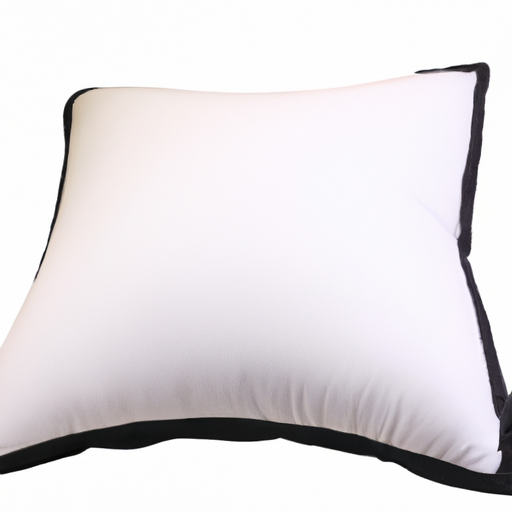Meditation pillows are comfortable, supportive pillows that help promote proper body alignment during meditation and yoga. They also provide comfort and cushioning to the hips, legs, and core, promoting a more comfortable seated experience. But meditation pillows can also be used to improve flexibility. By adjusting the position of your body while using the pillow, you can help stretch your body and increase circulation. Through regular use, you may find an improvement in your range of motion and postural control.
What are the Benefits of Using a Meditation Pillow?
Meditation pillows are designed to make seated meditation or yoga more comfortable and restful. They minimize strain on your legs, back, hips, and neck when you are seated for long periods of time. This allows you to keep your body in the correct postural alignment and to practice mindfulness and focus on your breath. Additionally, the supportive yet soft cushioning of a meditation pillow can help relieve pressure points in your body and increase relaxation.
How to Use a Meditation Pillow for Improved Flexibility
The easiest way to use a meditation pillow for improved flexibility is to start with basic seated yoga postures. Make sure you are sitting straight and tall with your head aligned over your shoulders. Place the pillow behind your lower back; it should be sized so that it supports your spine. Place the pillow beneath your legs if you don’t find it comfortable to sit directly on the floor. This will help to bring balance to your hips and provide extra cushioning.
Begin by slowly stretching forward, round your spine and move from side to side. Move slowly and deliberately, allowing the breath to become even and relaxed. To increase the flexibility of your chest area, allow your arms to hang loose in front of you as if you have just finished a set of push-ups. Then rotate your arms up as if you are grabbing a large beach ball in front of you and push it away from your body. Finally, sink even further downwards into the pose and feel the stretch in your abdominals.
What Are the Different Types of Meditation Pillows?
Meditation pillows come in a variety of shapes, sizes and materials. The most common ones are round or bolster-shaped pillows filled with natural grains such as millet, buckwheat hulls or Kapok. These pillows are ideal for supporting the spine, neck and head. They are also light enough that they can be moved around easily.
There are also crescent-shaped pillows that provide extra support around the neck and backbone. These pillows can be used as a seat cushion as well as a reclined resting cushion. The crescent-shaped pillow helps reduce strain on the neck, upper back, lower back and hip flexors.
Tips for Choosing the Right Meditation Pillow
When selecting a meditation pillow, seek out one that provides support and comfort for the areas of your body where you experience discomfort or tightness. You’ll also want to choose one that is both firm enough to support your body weight and yet soft enough to encourage relaxation.
Make sure that the pillow you choose has enough stuffing to provide proper support for all areas of your body. Additionally, consider choosing natural materials like buckwheat hulls, millet, or Kapok as these contain no synthetic fibers or chemicals, are eco-friendly, and are more breathable than synthetic fillings.
What to Look for in a Quality Meditation Pillow
When purchasing a meditation pillow, look for one that is made from quality materials that are both comfortable and supportive. You may also want to try out different shapes, sizes, and fills to find one that suits your needs and preferences best—this will vary from person to person. Additionally, seek out a pillow that is sturdy enough to maintain its shape over time.
How to Care for Your Meditation Pillow
To ensure the longevity of your meditation pillow, it is important to clean and maintain it properly. To clean, use a soft cloth with a mild detergent solution–avoid using any abrasive materials such as steel wool which could damage the stuffing or fabric covering. Additionally, keep your pillow away from direct sunlight when not in use in order to prevent discoloration.
How Often Should You Use Your Meditation Pillow?
The frequency that you use your meditation pillow should depend on your individual needs. Some people will use their meditation pillow multiple times a day, while others may only use it once a week. Consider how often you practice yoga or meditate, as well as any areas where you find yourself tight or uncomfortable during these activities. This will help you determine how often you should use your pillow.
What Kind of Exercises Can You Do with a Meditation Pillow?
In addition to posture-promoting activities such as seated meditation or yoga postures, meditation pillows can also be used as a tool to deepen flexibility exercises. As mentioned earlier, you can use the pillow’s support to stretch your neck and shoulders forward or side-to-side. Lying prone over the pillow can also be used to target tight areas in the lower back.
Are There Any Risks Associated with Using a Meditation Pillow?
When used properly, there are no risks associated with using a meditation pillow. However, if you go too deep into any posture while using a pillow, you could overextend yourself or cause injury. If at any time you experience pain or discomfort while using a meditation pillow, stop immediately. Additionally, if you have any medical condition or injury that could be affected by using a meditation pillow, it is best to consult with a healthcare professional before doing so.



